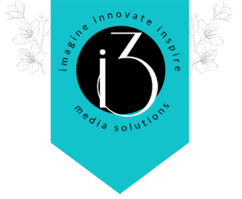So, you want to track your results on social media. Analytics are a great way…
How to Write a Press Release
Media coverage can serve as a valuable component of your marketing strategy. A positive media story about your business in a newspaper, magazine or broadcasted report can increase exposure, garner new customers, and boost your credibility in a particular field or area of interest. Best of all, traditional news coverage is free.
However, with so many businesses vying for media attention, it can be tough to attract the attention of editors and reporters tasked with deciding what to cover on a given day. This is where a well-crafted press release can help you stand out in a competitive field for coverage.
Marketing and PR professionals create press releases to alert the media to a newsworthy story or event. Press releases are sent to media outlets that may be interested in covering the story, and editorial teams enter details from those press releases into schedules that they use to determine coverage.
Media outlets don’t have the time, space or resources to cover every story in their community. For example, television news stations often have just one or two photographers and reporters working on weekends, which means they have to make some very tough decisions when picking and choosing from many events and stories worthy of coverage. Editors have to prioritize stories based on newsworthiness, community impact, and logistics as they try to cover as much as they can as quickly and efficiently as possible.
While you cannot guarantee coverage, you can craft a press release in a way that increases the odds you’ll be chosen as a subject for a news report.
First of all, be sure to keep the press release brief. Editors and reporters receive stacks of press releases every day, and they do not have time to read through lengthy materials. If you wish to include supplementary brochures and reports, that is acceptable – and indeed very helpful to the reporter that is assigned to the story, should it get that far. However, be sure to append a brief press release that summarizes the story and piques their interest, as that’s all the editor will have time to read until the story is assigned to a reporter.
Use the press release to explain who, what, where, when and why as concisely as possible. You can write the press release exactly as you hope to see the story printed, as some outlets will simply copy and paste a well-written press release if they have space for it. You can also briefly describe a coverage opportunity by incorporating bullet points, ensuring editors can quickly discern why the story is relevant to their audience and the logistics involved in covering it.
Here are some tips for tackling each section:
What/Why: Provide a brief description of the story or event, and be sure to include reasons it is relevant to the media outlet’s audience. For example, an event may be newsworthy because it raises funds for a sector of the community in need. A service or product may be newsworthy because it addresses a need in shared by a large audience, such as grocery delivery or ride-sharing services. Company growth can be newsworthy if it brings new jobs and opportunities to an area. Even individual success stories can be newsworthy if they inspire the community at large and call attention to exceptional accomplishments. Whatever the story, make sure it’s something that will be of interest to the media outlet’s audience in the broadest sense, and be sure to explain why it’s relevant to them.
Who: Provide the names of subjects who are available and willing to be interviewed by reporters, or let them know where and when they can meet subjects who are available for interviews. Reporters are required to interview people for stories, so this is a must, and they almost always need more than one interview subject to represent different perspectives on a story, so it’s best to line up a few subjects. If the story will be broadcast on radio, television, or the internet, be sure to have interview subjects available that are not microphone- or camera-shy. You can leave it to reporters to find their own subjects, but the more you can help them, the more likely they’ll be able to fit you into their schedule.
Where: Be sure to let them know where they can go to cover the story and interview subjects. If you are seeking broadcast coverage, it’s particularly important to provide photographers opportunities to capture images and video they can use in their stories.
When: Consider days and times that journalists and photographers can capture the interviews and images they need to cover your event. If your event takes place on a Saturday or Sunday, try to create an opportunity for news stations to preview the event on a weekday ahead of that time by letting them photograph preparations and interview both organizers and participants before it even starts. Not only does this increase your chances of getting coverage because they have many more photographers and reporters available during the week, but it also increases the chances your event will be the topic of news coverage ahead of time as opposed to after the event ends.
You can find instructions online for creating and formatting press releases, including this how-to guide: http://www.wikihow.com/Format-a-Press-Release-for-the-Associated-Press
Finally, keep in mind that news outlets are at the mercy of an unpredictable news cycle. They may schedule an interview with you, but then get diverted to breaking news. Don’t take it personally – that’s just the nature of the business. If you are flexible and creative when it comes to providing opportunities and good reasons for reporters to get your story, you can make it happen. Media outlets occasionally have their slow days, and your story may be exactly what they need to fill a gap they need filled, while getting the valuable coverage you desire.



